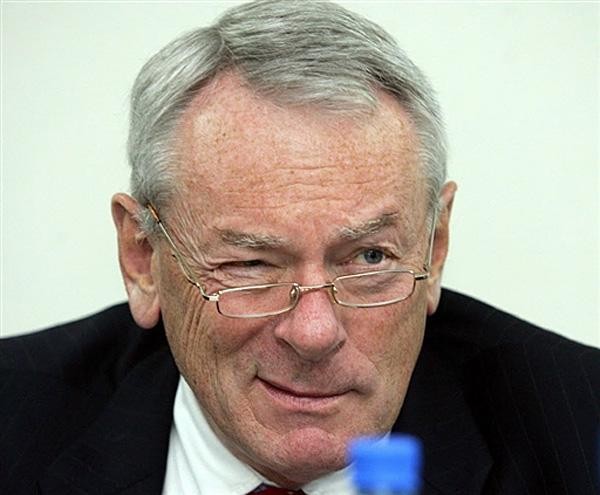WADA cyber-attack raises questions for Sky, cycling and TUE system at large
The difficulties of tackling corticosteroid use





The 'Fancy Bear' hacking group's leaking of documents gleaned from the World Anti-Doping Agency's computer systems has placed Bradley Wiggins and Chris Froome under the more immediate spotlight, but the information produced also raises wider questions, both for Team Sky's medical staff and for cycling as a whole. In particular, it highlights the issue of corticosteroid use in cycling, and the pressing need for reform of the current Therapeutic Use Exemption system.
The leak shows that Froome received TUEs to use the corticosteroid prednisolone in May 2013 – out-of-competition, ahead of the Critérium du Dauphiné – and again in April 2014, this time in competition, during the Tour de Romandie. In a statement on Thursday, Froome said that he had "no issues" with the leak, given out that each of the TUEs were already in the public domain.
In 2014, Le Journal de Dimanche revealed the Tour de Romandie TUE, and questioned whether the UCI had unfairly expedited the process, while earlier this year, Froome told the Scotsman of his previous TUE application in 2013.
Last year, Froome had already told the Sunday Times that he had refused to apply for a TUE during the 2015 Tour de France – despite Team Sky's apparent encouragement to do so. "I didn't want it to be the Tour de France that was won because he took this medication in the last week," Froome said then.
The Wiggins' TUEs uncovered by the hackers were more newsworthy, given that they hadn't been reported previously, and a statement by a WIGGINS spokesperson that there was "nothing new here" was disingenuous at best. It was by no means common knowledge that Wiggins, then at Team Highroad, had received TUEs in 2008 to treat asthma with Salbutamol, Fluticasone, Formoterol and Budesonide.
And it was certainly very notable to learn that Wiggins had, in the days before each of his last three Grand Tours – the 2011 and 2012 Tours, and the 2013 Giro d'Italia – received a TUE for a 40mg intramuscular injection of the corticosteroid Triamcinolone Acetonide, presumably applied for with the knowledge and blessing of his Sky team.
Triamcinolone Acetonide and Team Sky's priorities
The latest race content, interviews, features, reviews and expert buying guides, direct to your inbox!
Wiggins' application for Triamcinolone Acetonide was, according to the leaked forms, to treat a "lifelong allergy to pollen nasal congestion/rhinorrhoea, known allergy to grass pollen, sneezing throat irritation, wheezing leading to dysnopnoea eye watering runny nose." In short, Wiggins sought permission to use Triamcinolone Acetonide as a hay fever treatment and the product is indeed very effective in limiting the symptoms of hay fever for a period of three to six months.
However, Triamcinolone Acetonide is a particularly potent corticosteroid with lasting side effects that can include immunosuppression, gastritis, stomach ulcers, mood problems and insomnia. Perhaps most pertinently to cyclists, long-term corticosteroid injections are believed to increase the risk of osteoporosis in the medium to long term.
The potential side effects of Triamcinolone Acetonide are such that in Britain, the National Health Service has in recent years advised its GPs not to administer corticosteroid injections to treat hay fever, in line with the recommendations of the British Society of Allergy and Immunology.
Wiggins, just like Froome, did not break any rules by availing of a TUE to use Triamcinolone Acetonide to treat hay fever, and, in accordance with the UCI’s no needles policy, he received the injection while he was not in competition.
Indeed, just days after receiving the first certified Triamcinolone Acetonide injection in on June 29, 2011, Wiggins even queried whether other teams on that year's Tour would adhere to the no needles policy. "It would be great on the Tour if they actually started raiding teams to see that people are actually toeing the line - as medical people in our team are adamant teams are still continuing to use syringes for recovery," Wiggins told the Mirror on July 1, 2011.
The use of an intramuscular injection of Triamcinolone Acetonide – nowadays a last resort in the treatment of hay fever – does, however, raise a serious question for Team Sky's medical staff. No anti-doping rules were broken, but was immediate gain – Tour de France victory in 2012 – prioritised over the long-term health of the rider?
It seems to contradict at least some of the ideals espoused by Dave Brailsford's team on its launch in 2010.
The TUE system at large
The issue, of course, is bigger than Wiggins, Froome and Team Sky's own stance on the use of corticosteroids. Theirs are simply cases that highlight a wider issue, namely that the current TUE system – particularly in relation to corticosteroids, but not only – is scarcely fit for purpose.
Last year's Cycling Independent Commission report highlighted the potency of corticosteroids as a performance enhancer, with one team doctor noting the issue of riders using "corticoids to 'lean out' i.e. to lose weight quickly, and keep it off, without losing power. By way of example he explained that to lose 4kg in 4 weeks by using corticoids would provide a 7% power/weight improvement."
All of this, of course, can be done "legally" by applying for a TUE. As the CIRC report pointed out, this loophole is all the wider because "it is difficult to tell from a sample whether corticoids have been administered through permitted routes of administration."
Given both the known and suspected performance-enhancing properties of corticosteroids – weight loss, increasing airflow to the lungs, reducing pain during high intensity exercise – why, then, does WADA have such a generous threshold in testing for corticosteroids, and effectively rubber-stamp their use on demand with the TUE system?
The answer, it seems, is both a legal and financial one. Stung by Bo Hamburger's successful case against the newly-introduced EPO test in 2001, both the UCI and WADA have been comparatively conservative in rolling out new measures ever since.
"I think since then, the UCI and WADA have been making sure they’re more than covered from a legal point of view," Cycling Ireland doctor Conor McGrane told Cyclingnews. "It's like the bio passport: they're reluctant to make a case unless they're certain they're going to win it. They won't take action unless they can prove it in court."
Inconsistency
Yet if those constraints are regrettable, but understandable, there seems to be little excuse for the inconsistencies and lack of transparency inherent in the existing TUE system. Different TUE committees deliberating across different countries, federations and sports seem to have different levels of rigour when it comes to granting or denying applications for therapeutic use exemptions for a range of products, creating an obvious disparity.
"The whole reason WADA was set up was to stop different counties doing their own thing. The idea was to have one banned list and one set of principles across the world, but it seems on this issue that a lot of bodies are applying different standards to the point where high-profile athletes appear to be able to apply for TUEs and get them, whereas athletes lower down the rankings find it very difficult to get these things. There's a fairness issue there, straight off," McGrane said.
"I think they need to have all of these TUE committees working off the same guidelines. And there are very strong guidelines out there, so it's pretty straightforward to see whether a TUE is justified based on those."
A few years ago, for instance, Sport Ireland informed doctors that it was no longer minded to approve applications for steroid injections to treat hay fever, but it is unclear whether that directive has been rolled out across all nations and disciplines.
"There's huge inconsistency between what Sport Ireland were doing and the UCI were doing, which seemed to be approving TUEs at the drop of a hat. Presumably different national federations and different countries have been doing different things," McGrane said. His suggestion?
"I think for a start what WADA each national federation could do is list the number of TUEs there are for each condition," McGrane said. "Without naming anybody, they could list the TUEs they issue, listed by medication and by sport. That way, you'd know there were X number of TUEs issued for hay fever in cycling and then you could compare that from sport to sport and nation to nation, and then compare it to the prevalence in the general population."
WADA's first response this week to the 'Fancy Bears' cyber-attack was one of understandable ire. Once the anger subsides, perhaps they might feel sufficiently embarrassed as to begin overhauling a TUE system that seems to be doing little to level the playing field.

Barry Ryan was Head of Features at Cyclingnews. He has covered professional cycling since 2010, reporting from the Tour de France, Giro d’Italia and events from Argentina to Japan. His writing has appeared in The Independent, Procycling and Cycling Plus. He is the author of The Ascent: Sean Kelly, Stephen Roche and the Rise of Irish Cycling’s Golden Generation, published by Gill Books.
